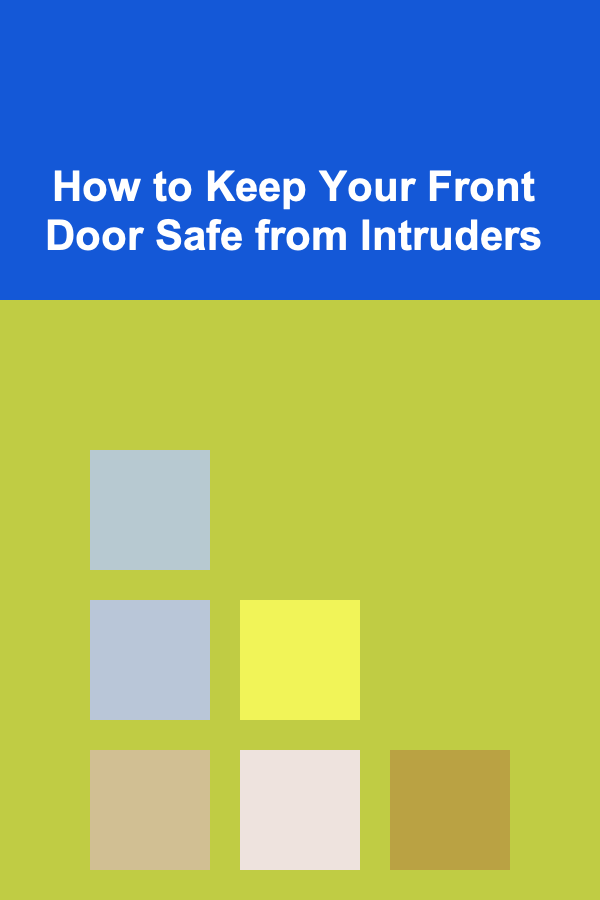
10 Tips for a Compact and Effective First Aid Kit for Hiking
ebook include PDF & Audio bundle (Micro Guide)
$12.99$9.99
Limited Time Offer! Order within the next:

When you're out on a hiking adventure, whether it's a short trail or an extended backcountry expedition, the importance of being prepared for emergencies cannot be overstated. One of the most essential components of this preparedness is having a well-stocked first aid kit. Accidents can happen at any time, from minor cuts and bruises to more serious injuries, so having a reliable first aid kit can make a huge difference in ensuring your safety.
The challenge, however, lies in creating a first aid kit that is both compact and effective. It's essential to balance the need for a comprehensive kit with the limited space and weight constraints of carrying it in your backpack. This article provides 10 tips for building a compact and effective first aid kit specifically tailored for hiking. These tips will guide you in packing the right supplies, ensuring that you're prepared for a variety of injuries while minimizing weight and bulk.
Choose the Right Container
The first step in building an effective first aid kit is selecting the right container. Your kit needs to be durable, water-resistant, and easy to access, without taking up too much space in your pack. There are several options to consider:
a. Compact Hard Case
- A small, hard-shell container is ideal for keeping supplies organized and protected from moisture. This type of case is durable and can withstand impacts from drops or rough handling.
b. Soft, Lightweight Pouch
- If you prefer a lighter option, a soft, fabric pouch with multiple compartments might be a better choice. These pouches are often more flexible and easy to pack into tight spaces.
c. Waterproofing
- Whether you choose a hard case or a soft pouch, waterproofing is critical. Look for materials that are water-resistant or opt for a plastic bag or dry sack to add extra protection against moisture.
Prioritize Lightweight Essentials
When you're hiking, every ounce matters. One of the primary challenges in packing a first aid kit is balancing the need for comprehensive care with the weight restrictions of hiking. To help you pack a lightweight kit, consider the following:
a. Multi-Use Items
- Instead of carrying multiple single-use items, opt for multi-purpose products. For instance, a large bandage can double as a dressing for larger wounds or as a tourniquet in case of severe bleeding.
b. Remove Unnecessary Items
- Avoid overpacking your first aid kit with items you're unlikely to need on a typical hiking trip. Keep in mind that many standard first aid items, such as ointments or medications, might not be necessary unless you're hiking in remote, high-risk environments.
Include a Variety of Bandages and Dressings
One of the most common injuries you may encounter while hiking are cuts, scrapes, and blisters. A well-stocked first aid kit should include a variety of bandages and dressings to address different wound types:
a. Adhesive Bandages
- These are essential for covering small cuts, scrapes, and blisters. Choose several sizes to ensure you can cover a range of wounds. Waterproof adhesive bandages are especially useful for hiking, as they will stay secure even in wet conditions.
b. Sterile Gauze Pads
- Sterile gauze pads can be used to cover larger wounds. They're helpful for absorbing blood, preventing infection, and helping to stabilize injuries.
c. Bandage Rolls
- Elastic bandage rolls (such as ACE bandages) are great for wrapping sprained ankles, wrists, or any other joint injuries. These bandages can provide compression and support, which is essential for reducing swelling and stabilizing injuries.
Antiseptic and Infection Control
When hiking in remote areas, infection control becomes even more critical. You might be far away from medical help, so it's important to prevent infections early on. Include the following:
a. Antiseptic Wipes
- Individually packed antiseptic wipes are great for cleaning cuts and abrasions before applying a bandage or dressing. They're small, compact, and easy to use.
b. Antiseptic Cream or Ointment
- A small tube of antiseptic cream or ointment can be helpful in treating cuts, scrapes, or burns to prevent infection. Consider an ointment with additional pain-relieving properties to soothe minor injuries.
c. Alcohol Pads
- Alcohol pads are another way to clean wounds, but they can be drying and painful when applied to open wounds. Use them sparingly, particularly for serious injuries.
Pain Relief and Medications
Although hiking can be a physically demanding activity, you don't always want to carry a full set of medications. Instead, include a few key items that will address common ailments and offer pain relief during the hike:
a. Ibuprofen or Acetaminophen
- These pain relievers can help with headaches, muscle aches, and joint pain. Pack a small bottle or a few individually packed tablets to keep your load light.
b. Antihistamines
- If you have allergies or you're hiking in an area with lots of insects or pollen, antihistamines can help manage allergic reactions. This can be especially useful for mild reactions to bug bites, stings, or plant exposure.
c. Anti-Diarrheal Medication
- If you're hiking in remote areas, digestive issues can arise, and carrying a few anti-diarrheal pills can be a lifesaver.
Blister Treatment
Blisters are one of the most common injuries among hikers, and they can significantly impact your hiking experience. Being prepared for blisters can prevent you from cutting your trip short:
a. Moleskin
- Moleskin is a soft, padded material that can be cut and applied over blisters to reduce friction and prevent further irritation. It's an essential addition to your first aid kit.
b. Blister Bandages
- These specialized bandages are designed to cover blisters and keep them protected from dirt and moisture. They often contain a gel that provides cushioning and helps speed up the healing process.
c. Tape for Blisters
- Some hikers prefer carrying medical tape, which can be used to secure gauze pads or dressings over blisters. It can also help reinforce Moleskin when covering larger areas of skin.
Insect Bites and Stings
While hiking, you'll likely encounter insects such as mosquitoes, bees, or ticks. It's important to have the tools to address bites and stings promptly to prevent further irritation or infection:
a. Anti-Itch Cream or Gel
- A small tube of anti-itch cream (such as hydrocortisone) can help reduce itching from insect bites, poison ivy, or other skin irritations. It's also useful for calming rashes or allergic reactions.
b. Tick Remover Tool
- Ticks are a significant concern in some hiking areas, as they can transmit diseases like Lyme disease. A tick removal tool is essential for safely removing ticks from your skin. It's better to have one than to risk dealing with an embedded tick without the proper tool.
c. Sting Relief Pads
- For bee stings or other insect bites, sting relief pads can provide immediate cooling relief and reduce pain or swelling.
Thermal Emergency Gear
Hypothermia and heat exhaustion are both real risks when hiking in extreme conditions. Packing a few thermal emergency supplies can be life-saving:
a. Emergency Blanket
- A compact, lightweight emergency blanket is a must-have for any hiking first aid kit. These blankets are designed to retain body heat in cold conditions, which is essential for preventing hypothermia.
b. Heat or Cold Packs
- Instant cold packs can help treat sprains, strains, or heat-related injuries, while heat packs are beneficial for warming up during colder conditions. Both are small, easy-to-carry options.
Safety Tools and Accessories
In addition to medical supplies, there are a few safety tools that can assist in emergency situations:
a. Whistle
- A whistle can help attract attention in the event of an emergency. It's lightweight, easy to use, and an essential tool for signaling distress.
b. Tweezers
- Tweezers are useful for removing splinters, thorns, or other debris from your skin. A small, compact pair should be included in your kit.
c. Scissors
- A pair of small, lightweight scissors is helpful for cutting gauze, tape, or bandages. They're also useful for cutting clothing or fabric to use as a dressing or for splints.
Tailor Your Kit to Your Hiking Environment
Finally, tailor your first aid kit based on the environment where you'll be hiking. If you're hiking in a tropical or high-altitude region, you may need additional supplies like sunscreen, water purification tablets, or altitude sickness medication. On the other hand, if you're heading into cold, snowy terrain, you might want to include items like frostbite treatments or extra warmth-related gear.
Conclusion
Building a compact and effective first aid kit for hiking is about being prepared for a wide range of potential injuries and illnesses without overpacking. By selecting essential items such as bandages, antiseptics, blister care, and pain relief medications, and ensuring that each item serves a clear purpose, you can create a first aid kit that is lightweight, portable, and ready for emergencies. Whether you're on a short day hike or a multi-day trek, having a well-organized first aid kit will ensure that you're equipped to handle unexpected situations, ultimately making your outdoor adventures safer and more enjoyable.
Reading More From Our Other Websites
- [Home Budget Decorating 101] How to Create a Cozy Home with Low-Cost Accessories
- [Home Pet Care 101] How to Use Home Remedies for Common Pet Ailments
- [Home Party Planning 101] How to Plan a Pet-Friendly Home Party
- [Organization Tip 101] How to Use Project Management Tools for Team Collaboration
- [Personal Investment 101] Turning Your Deep Learning Skills into Passive Income
- [Biking 101] How to Recover After a Bike Race: Best Practices for Cyclists
- [Home Soundproofing 101] How to Reduce Plumbing Noise: Soundproofing Tips for a Quieter Home
- [Gardening 101] From Tomatoes to Beans: A Visual Crop‑Rotation Chart for Balanced Garden Planning
- [Personal Finance Management 101] How to Achieve Financial Wellness: Tips for a Balanced Life
- [Organization Tip 101] How to Set Up a Toy Swap with Friends for Variety

Breaking the Rules: How to Stand Out by Defying Conventional Wisdom
Read More
How to Determine the Best Personal Finance Management Tools for Your Needs
Read More
How to Keep Your Front Door Safe from Intruders
Read More
How to Make Your Home More Comfortable for Elderly Pets
Read More
How to Organize Your Digital Art Portfolio for Showcase
Read More
How to Soundproof Your Home While Keeping It Stylish
Read MoreOther Products

Breaking the Rules: How to Stand Out by Defying Conventional Wisdom
Read More
How to Determine the Best Personal Finance Management Tools for Your Needs
Read More
How to Keep Your Front Door Safe from Intruders
Read More
How to Make Your Home More Comfortable for Elderly Pets
Read More
How to Organize Your Digital Art Portfolio for Showcase
Read More